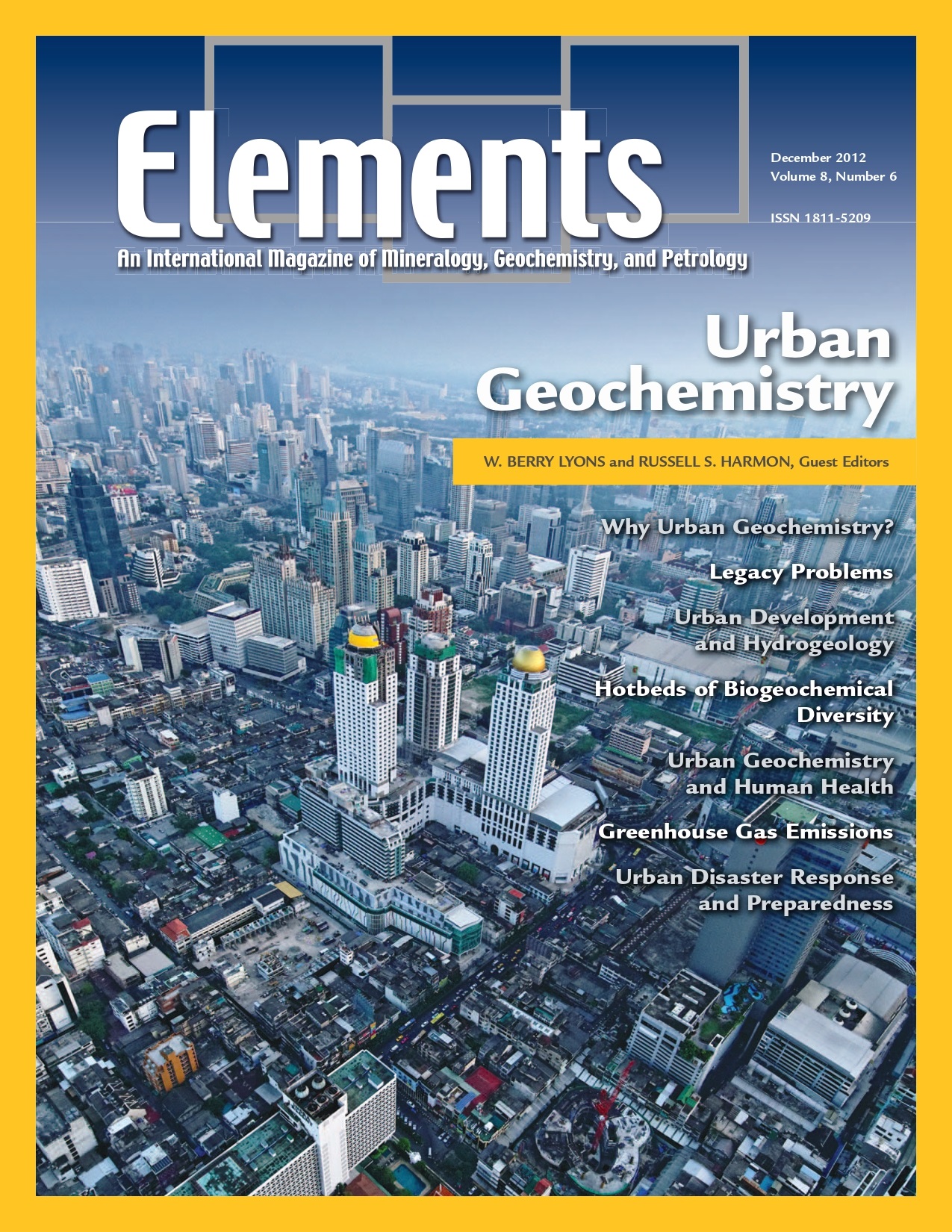
Granitic Pegmatites, August 2012, Vol. 8, No. 4
June 28, 2024
Kaolin, June 2014, Vol. 10, No. 3
June 28, 2024Urban Geochemistry, December 2012, Vol. 8, No. 6
$20.00
By 2030, about 60% of the human population will live in cities. Clearly, anthropogenic activities in urban environments affect geochemical cycles, water resources, and the health of ecosystems and humans globally.
Urban Geochemistry
December 2012, Vol. 8, No. 6
By 2030, about 60% of the human population will live in cities. Clearly, anthropogenic activities in urban environments affect geochemical cycles, water resources, and the health of ecosystems and humans globally. Past practices are still having biogeochemical impacts today, and in many cases remediation is needed. Both natural and manmade disasters greatly change the geochemistry of urban areas. Understanding past impacts can aid in future disaster planning. An increased awareness of the geochemical and mineralogical effects of urbanization on geochemical cycling will aid urban planners in the effort to make urban development sustainable.
Why You’ll Love Elements Magazine:
- Expert Contributors: Articles written by renowned researchers in the field of geoscience.
- Engaging Content: Join a community of readers who are passionate about Elements.
- Exceptional Quality: Each issue is printed on high-quality paper with stunning visuals and detailed illustrations that bring complex scientific concepts to life.
Order your copy of the December 2012 issue of Elements magazine today and explore urban geochemistry.
Related products
-
Early Earth, August 2006, Vol. 2, No. 4
$20.00The earliest Earth was a strange inhospitable world, yet transitions occurred culminating in the evolution of life within the first billion years. The preservation of a sparse and ambiguous rock record has encouraged debate.
-
Fluids in Planetary Systems, January 2005, Vol. 1, No. 1
$20.00Water and other geofluids play an important role in the geochemical and rheological evolution of the Earth and other bodies in the solar system. These fluids are responsible for the formation of hydrothermal mineral deposits, affect eruption behavior in volcanic systems and the geophysical properties of the mantle, and significantly affect the way in which rocks deform and fracture.
-
Phosphates And Global Sustainability, April 2008, Vol. 4, No. 2
$20.00Phosphorus is a unique element: it is essential to the existence of all living forms, and as such controls biological productivity in many terrestrial and marine environments; but when in excess, it leads to uncontrollable biological growth and water-quality problems. This has become a common environmental issue, resulting from our careless use of phosphorus in agriculture, yet phosphate ore deposits, from which fertilizers are produced, are a finite natural resource.




